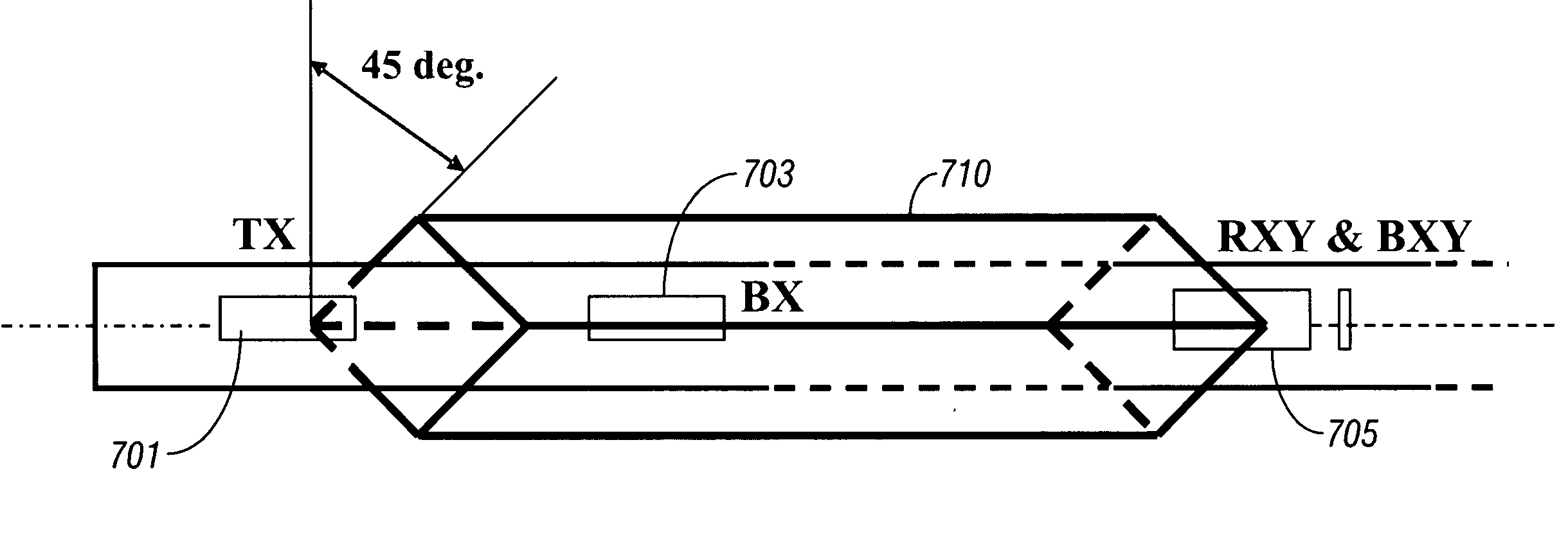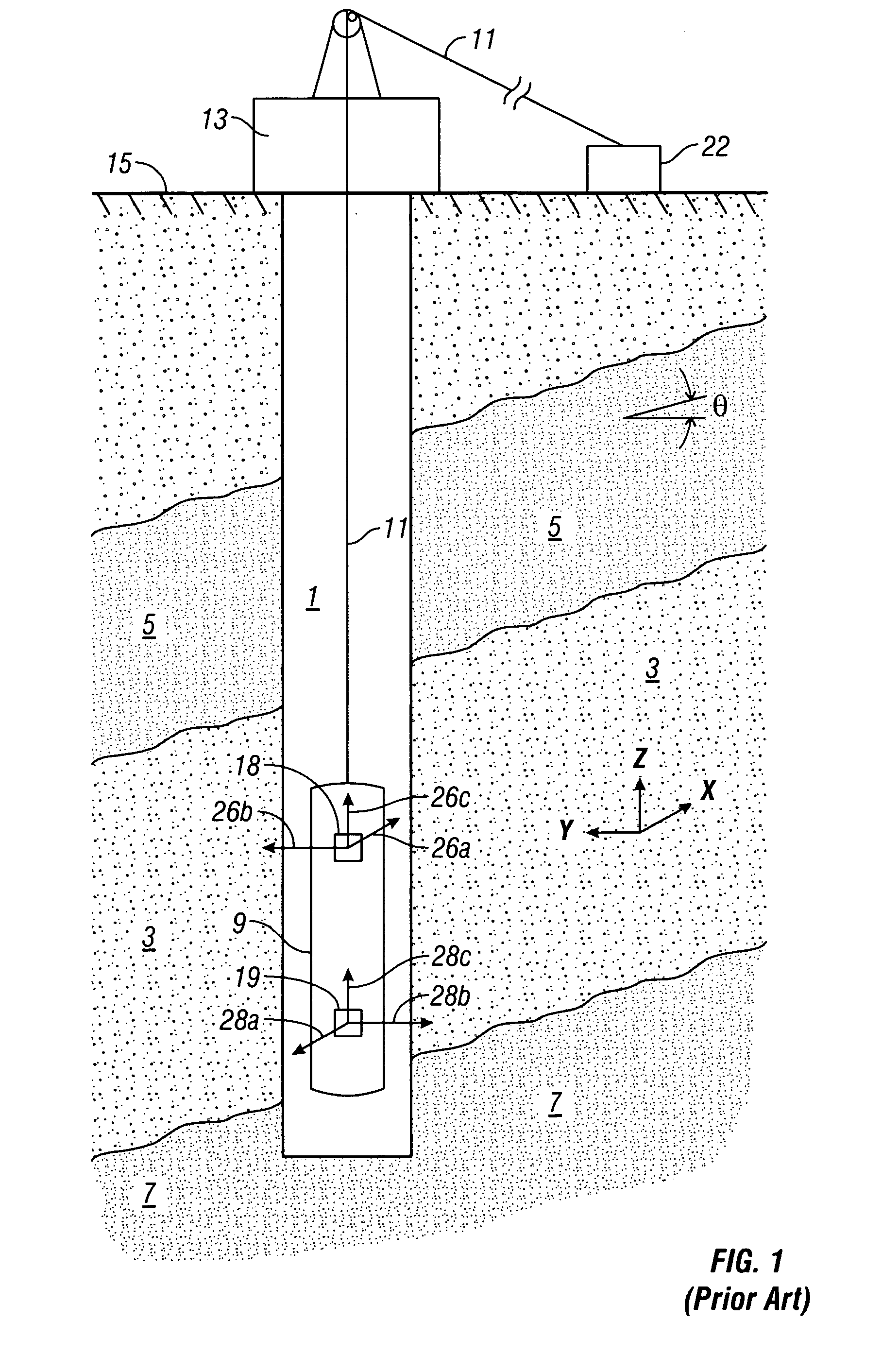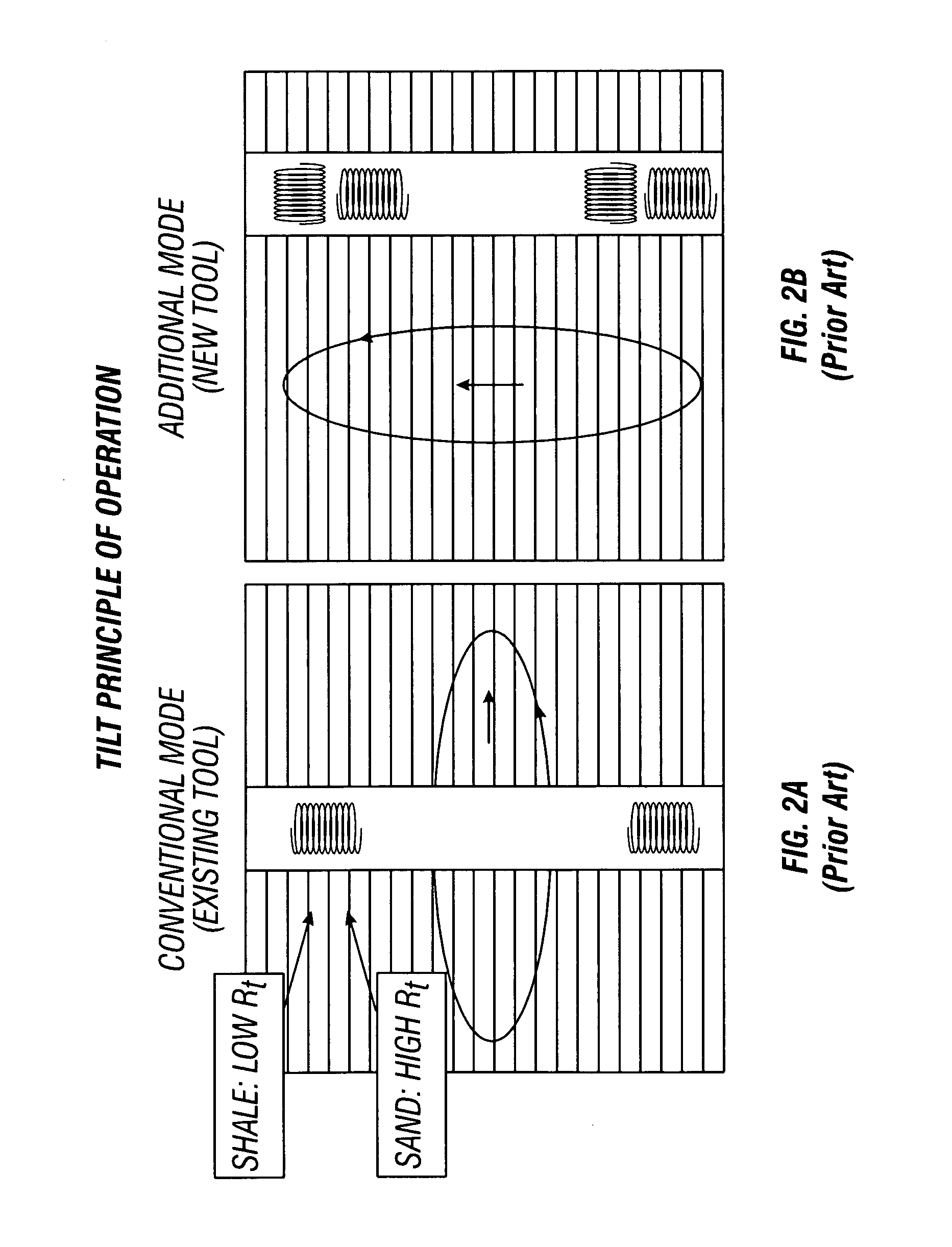Borehole conductivity simulator verification and transverse coil balancing
a conductivity simulator and borehole technology, applied in the field of apparatus design, can solve the problems of not providing a measure of vertical conductivity or anisotropy, cannot be detected individually, and difficult to detect hydrocarbon-bearing zones, so as to reduce the magnitude of additional signals, and reduce the magnitude of signals
- Summary
- Abstract
- Description
- Claims
- Application Information
AI Technical Summary
Benefits of technology
Problems solved by technology
Method used
Image
Examples
Embodiment Construction
[0037] The instrument structure provided by the present invention enables increased stability and accuracy in an induction wellbore logging tool and its operational capabilities, which, in turn, results in better quality and utility of wellbore data acquired during logging. The features of the present invention are applicable to improve the structure of a majority of known induction tools.
[0038] The invention will now be described in more detail and by way of example with reference to the accompanying drawings. FIG. 1 schematically shows a wellbore 1 extending into a laminated earth formation, into which wellbore an induction logging tool as used according to the present invention has been lowered. The wellbore in FIG. 1 extends into an earth formation which includes a hydrocarbon-bearing sand layer 3 located between an upper shale layer 5 and a higher conductivity than the hydrocarbon bearing sand layer 3. An induction logging tool 9 used in the practice of the invention has been ...
PUM
 Login to View More
Login to View More Abstract
Description
Claims
Application Information
 Login to View More
Login to View More - R&D
- Intellectual Property
- Life Sciences
- Materials
- Tech Scout
- Unparalleled Data Quality
- Higher Quality Content
- 60% Fewer Hallucinations
Browse by: Latest US Patents, China's latest patents, Technical Efficacy Thesaurus, Application Domain, Technology Topic, Popular Technical Reports.
© 2025 PatSnap. All rights reserved.Legal|Privacy policy|Modern Slavery Act Transparency Statement|Sitemap|About US| Contact US: help@patsnap.com



